A Dive Into Bold & Beautiful Pen Kalamkari
What is Kalamkari?
“Kalamkari”, an age-old art form with its origins in Andhra Pradesh, literally translates to ‘pen-worked.’
This art form adopts bold colours from natural dyes and motifs that weave together culture and craftsmanship to create rich fabric. Kalamkari artisans craft intricate designs and stories on fabric with brushes, captivating art enthusiasts and collectors alike.
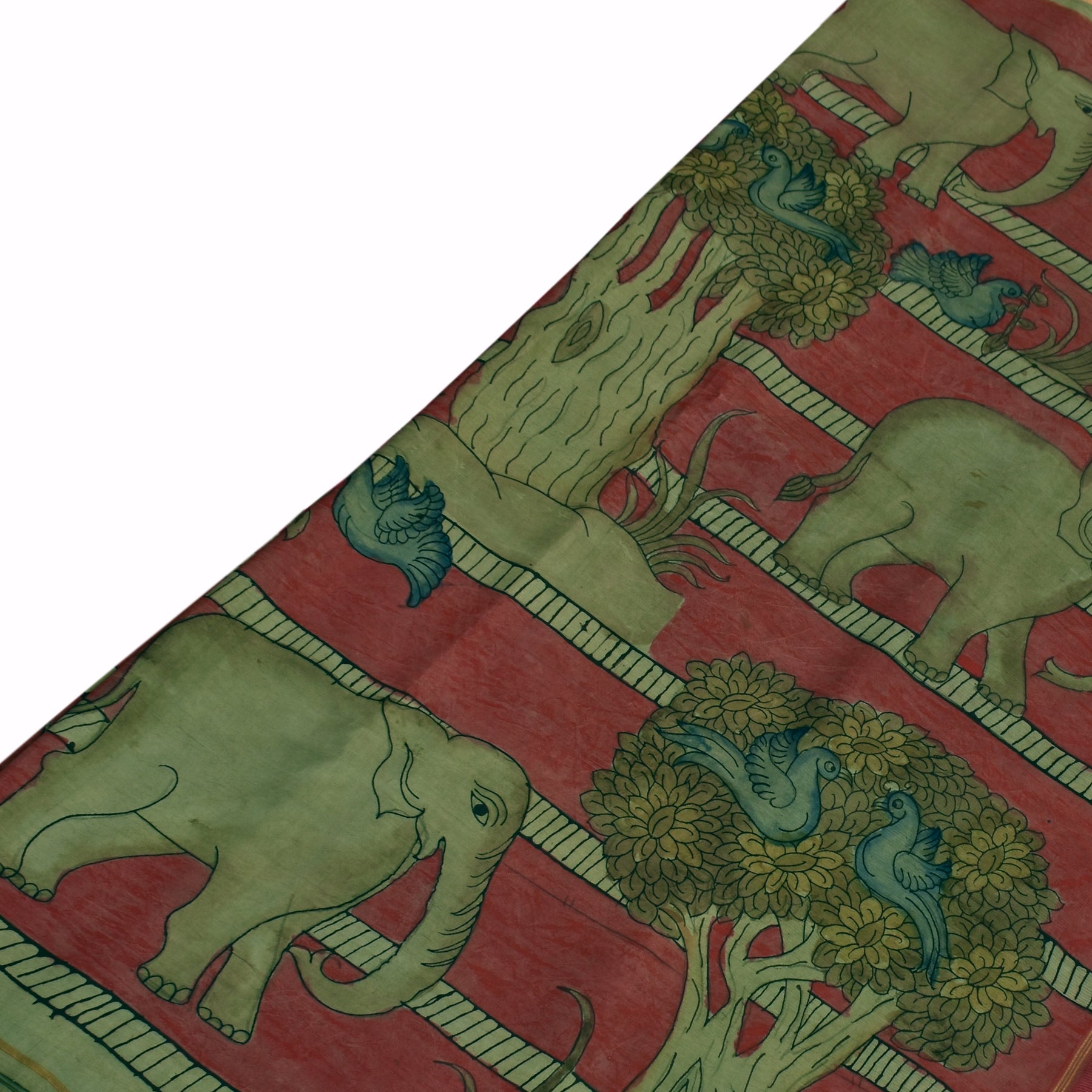
The pen kalamkari fabrics and pen kalamkari saree collections from Anya are our best sellers, so in this article, we want to tell you why they're so special and share the fascinating stories behind them.
A Brief History of Kalamkari
Centuries ago, storytellers and artists roamed from village to village, sharing tales from Hindu mythology with the local people. As time passed, this storytelling tradition transformed into the art of canvas painting, giving birth to Kalamkari. This vibrant art form has a history that spans over 3,000 years, with fabric samples featuring Kalamkari art discovered at archaeological sites like Mohenjo-Daro.
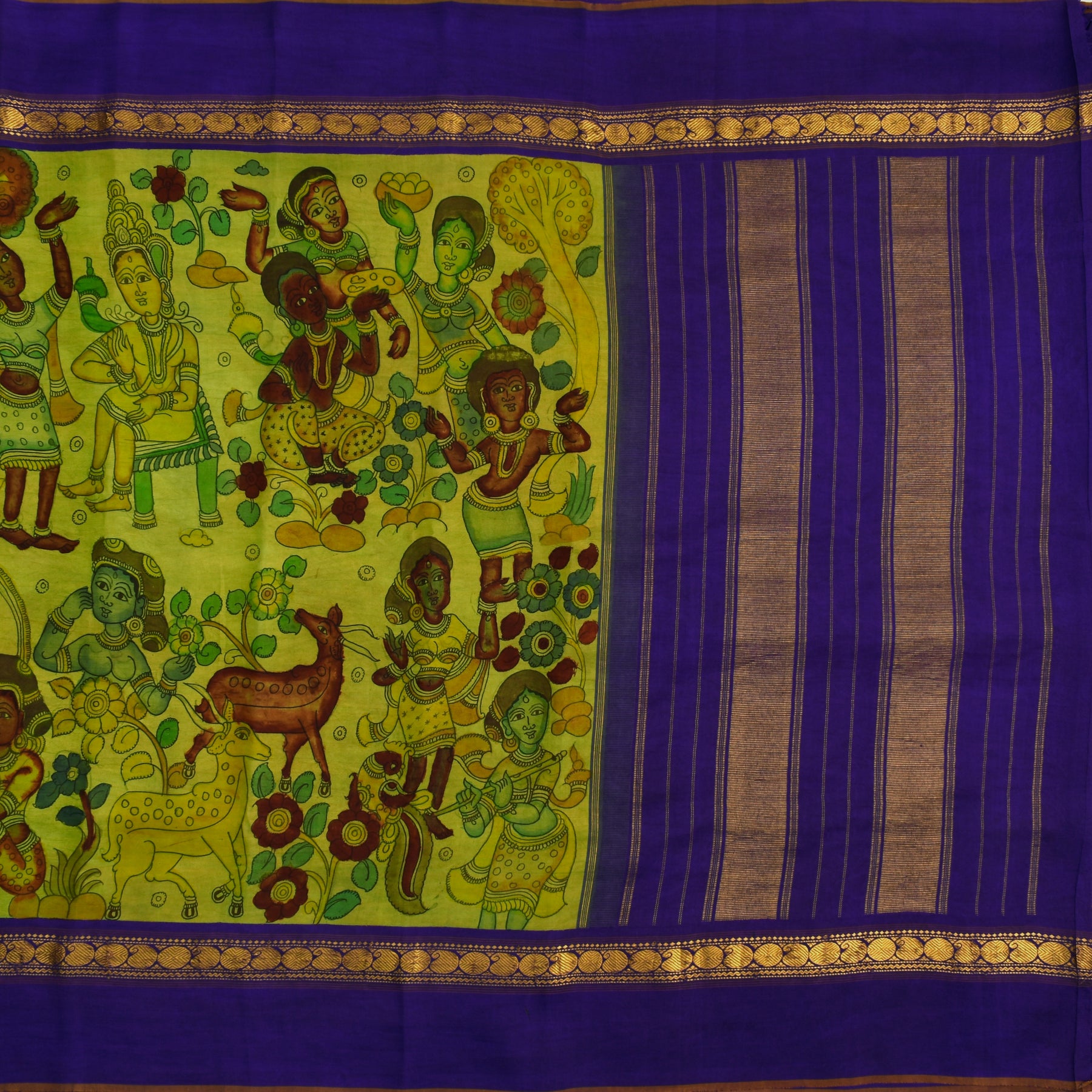
Kalamkari's roots can be traced back to the ancient Indus Valley Civilization, where evidence of this art form dates back to 3000 BC. Throughout its long history, Kalamkari has evolved, drawing influences from various cultures, including Persian, Mughal, and European.
Traditional Techniques
Traditionally, the creation of Kalamkari involves a meticulous and multi-step process that showcases the craftsmanship of the creators. This process has been passed down through generations, preserving the authenticity of this ancient textile art form.
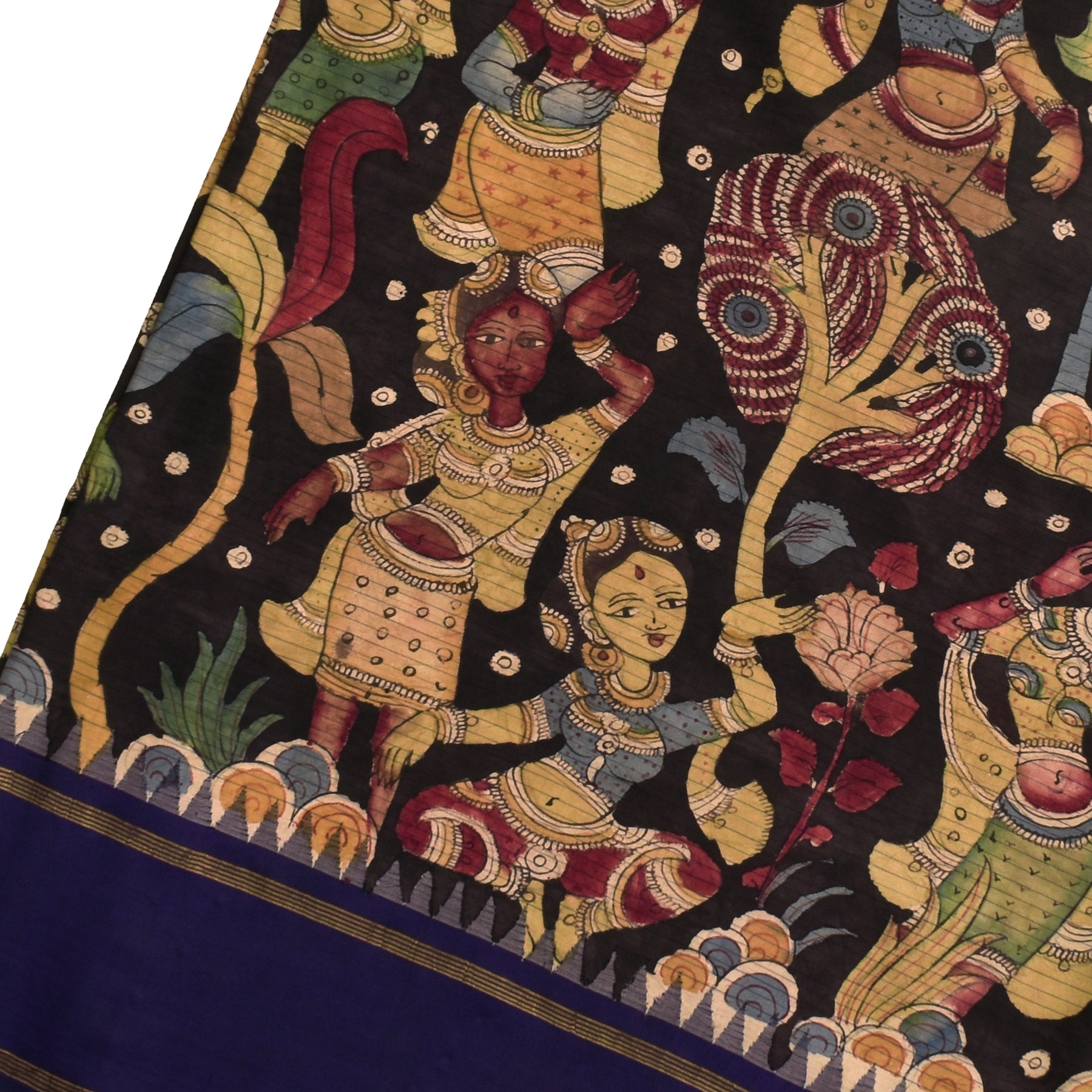
Here's a detailed look at the techniques involved in Kalamkari –
Preparation of Cloth
The first step in Kalamkari involves preparing the cloth. The fabric is steeped in a mixture of astringents, such as myrobalan, and buffalo milk. This treatment not only cleanses the fabric but also prepares it to absorb the dyes and mordants effectively. Once soaked, the cloth is spread out under the sun to dry to create an apt surface for the art to be made.
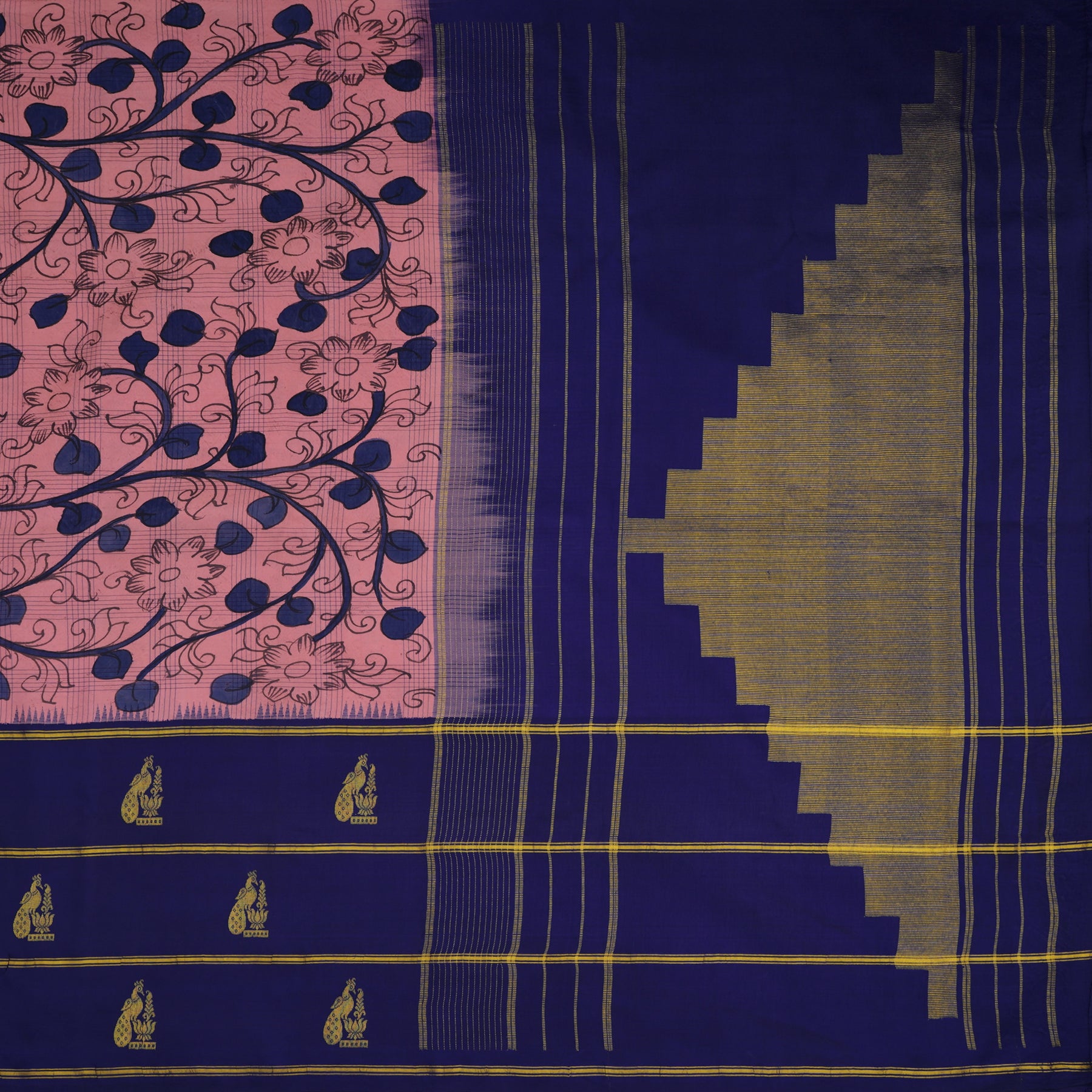
Outlining with Mordant
After drying, the cloth is ready for the next phase. Artisans use a mixture of mordant, which is a substance that helps fix the colours, to outline the portions of the design that are intended to be in red, black, brown, and violet. This outlining process provides a clear structure for the subsequent stages of colouring.
Alizarin Bath
The cloth is then immersed in a bath of alizarin, a natural red dye derived from the roots of the madder plant. This bath infuses the fabric with vibrant red hues, which are a hallmark of Kalamkari art.
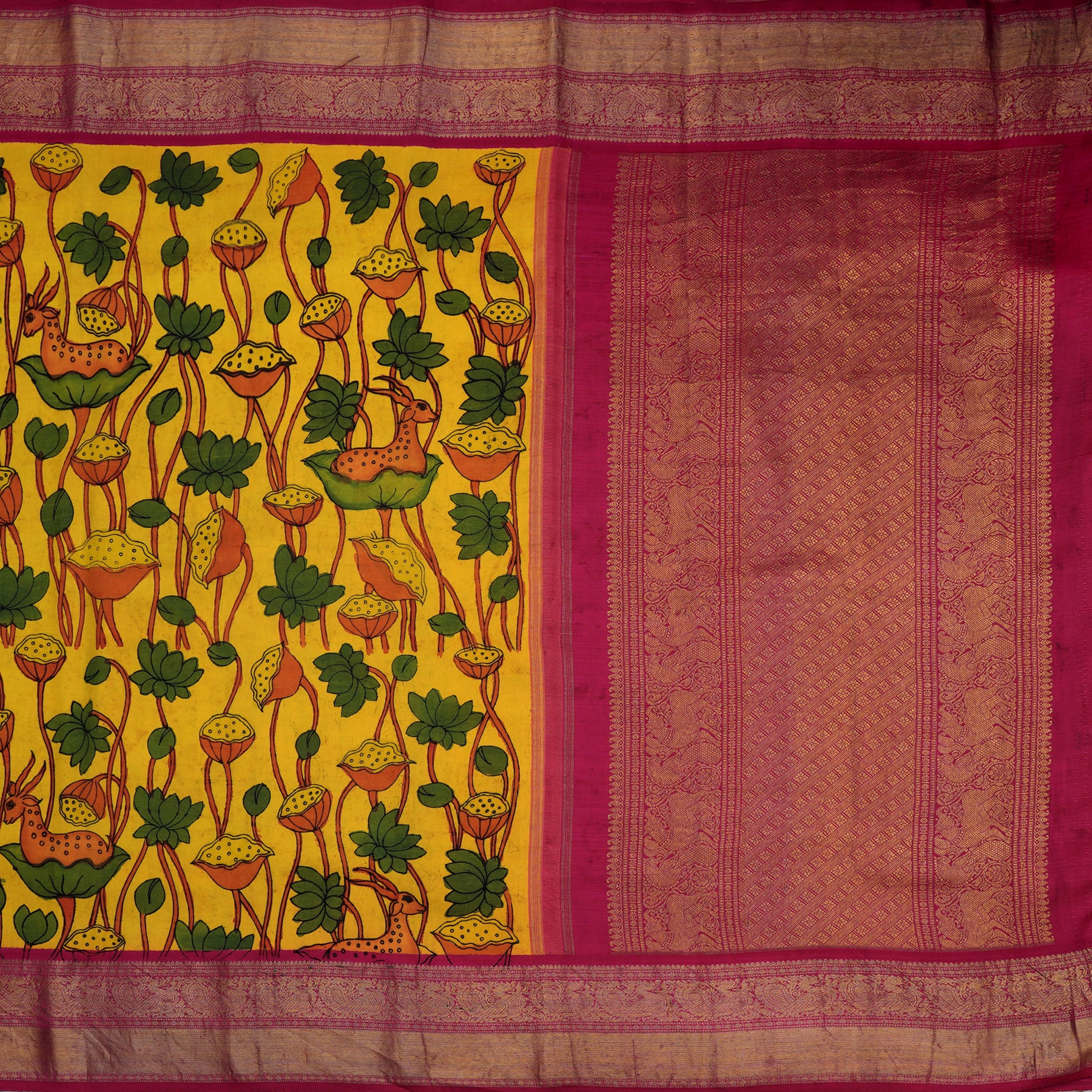
Wax Resistance for Blue Dye
To create blue portions of the design, the cloth is covered with wax, leaving only the intended blue areas exposed. This wax-resist technique ensures that the blue dye will not penetrate the covered sections. The cloth is then submerged in an indigo dye bath to achieve the desired shades of blue.
Hand-Painting
Following the dyeing phase, artisans utilise a special stick made from bamboo or date palm, featuring a fine hair bundle at one end, to delicately hand-paint the remaining parts of the design. This meticulous hand-painting demands precision and a keen artistic eye. These colours are often derived from vegetables, contributing to the artwork's natural and earthy aesthetic.
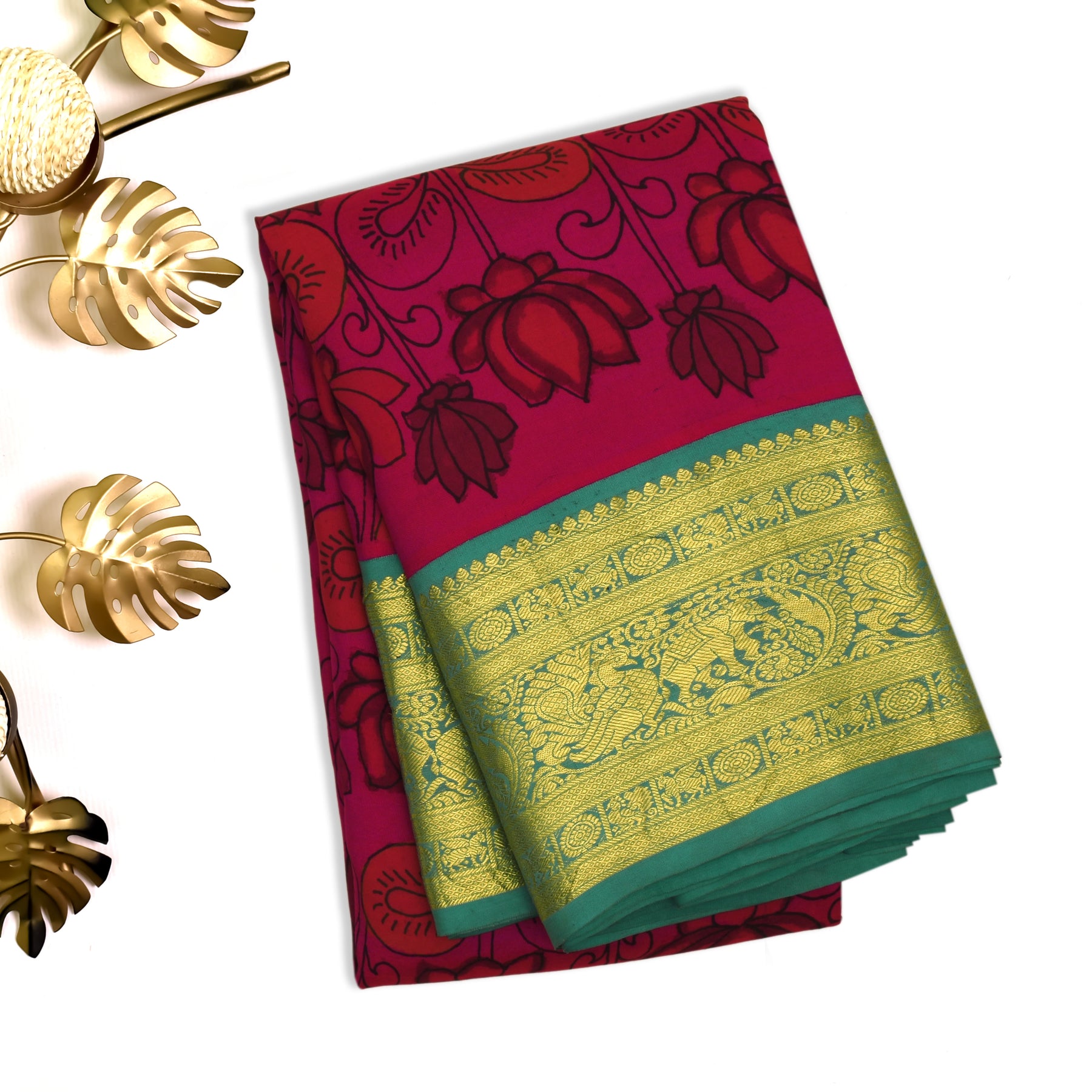
Jaggery and Water Mixture
To intensify the brilliance of the vegetable dyes and ensure they stick seamlessly to the fabric, artists dip their bamboo or date palm sticks into a blend of jaggery and water before applying the colours. This method guarantees a smooth and uniform application of colours onto the cloth.
Designs and Motifs

Kalamkari art primarily uses earthy colours like indigo, mustard, rust, black and green. Natural dyes used to paint colours in Kalamkari art are extracted from natural sources with no use of chemicals or artificial matter. These earthy colours are used to make bold patterns with intricate details.
Art Styles
In India, two distinct styles of Kalamkari art have flourished over the years, each with its own unique characteristics and regional inspirations. These two styles are the Srikalahasti and the Machilipatnam styles.
The Srikalahasti style of Kalamkari is a testament to meticulous handwork. Here, artisans use a pen or "kalam" for freehand drawing and colouring. This style draws inspiration from Hindu mythology, often depicting scenes from great epics like the Ramayana and Mahabharata.

The Machilipatnam style, on the other hand, involves block painting with vegetable dyes on fabric. Machilipatnam Kalamkari designs are typically printed using hand-carved blocks, and they often feature intricate details. These two styles are not only distinct in technique but also in their design inspirations. While the Srikalahasti style draws from Hindu mythology, the Machilipatnam style embraces a broader range of motifs.
How to Style a Kalamkari
The vibrant hues and captivating prints of Kalamkari fabrics take centre stage in any ensemble. With this in mind, as sarees or stitched into unique kurtas from our fab fabric, Kalamkari's distinctive aesthetic should be celebrated without overshadowing the print.

Kalamkari sarees are renowned for their intricate and detailed artwork. The key to making them shine is to keep the focus on the print itself. When selecting a blouse to complement your saree, opt for a simple design with a solid colour tone. Avoid pairing it with a designer printed blouse, as it may overwhelm the ensemble with too many prints.
With the right styling and jewellery, Kalamkari outfits are suitable for all occasions from workwear to wedding wear for a guest too!
Conclusion
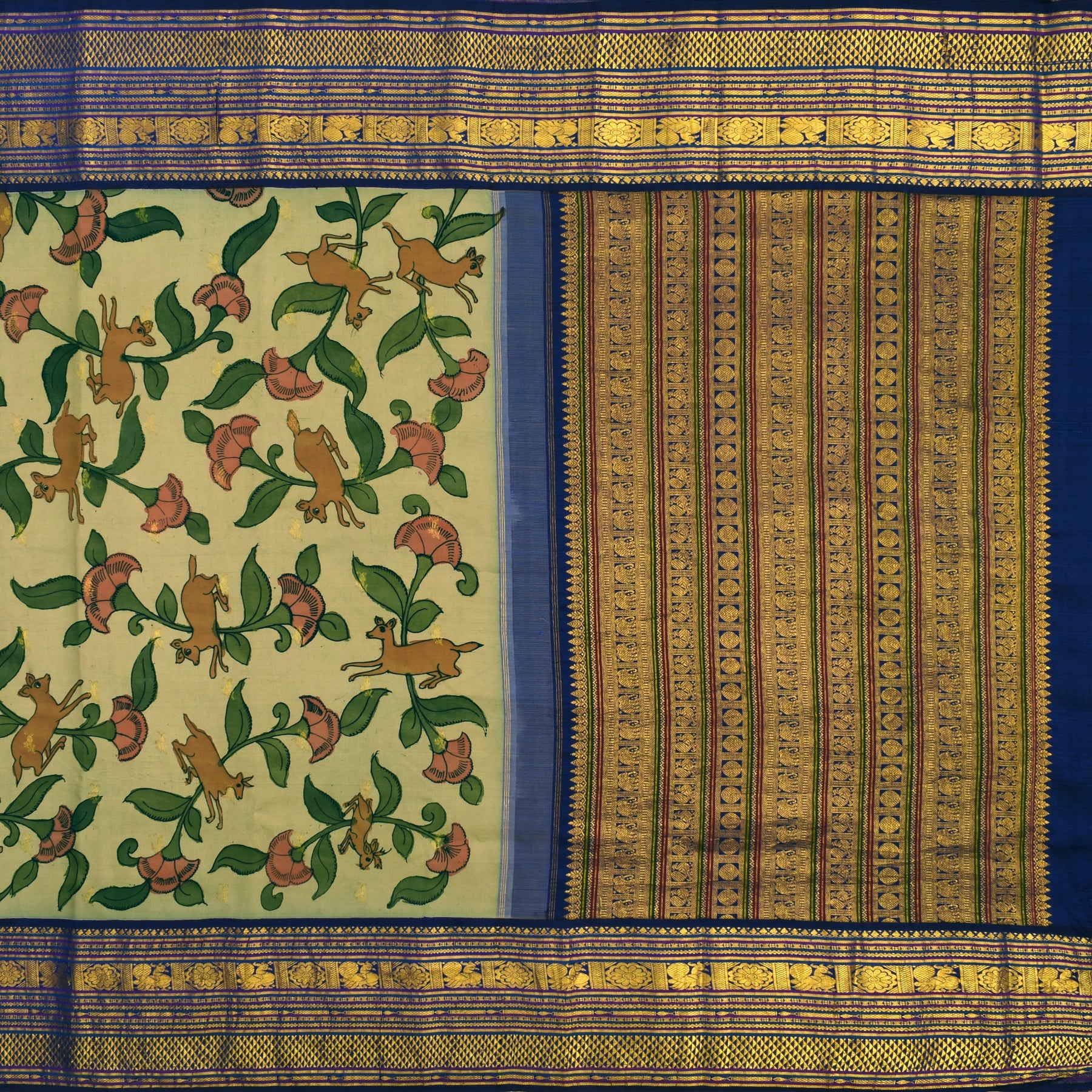
Kalamkari is a magnificent art form that weaves together stories, traditions, and regional inspirations on fabric. With its vibrant colours and rich history, it continues to be a cherished cultural treasure, depicting tales from Hindu mythology and much more. Shop with Anya Online today to enhance your saree collection!





